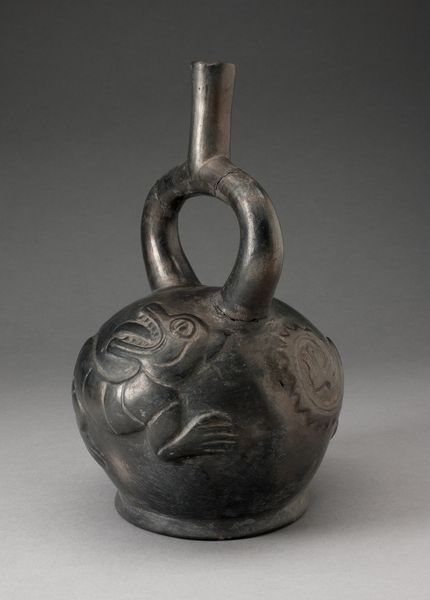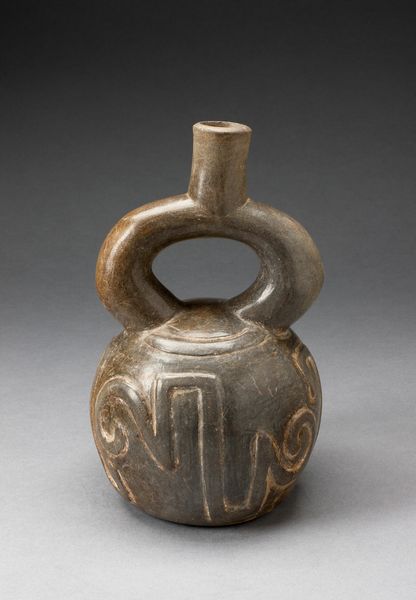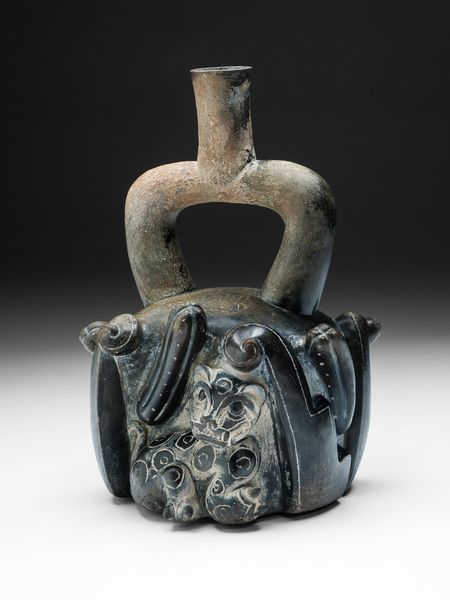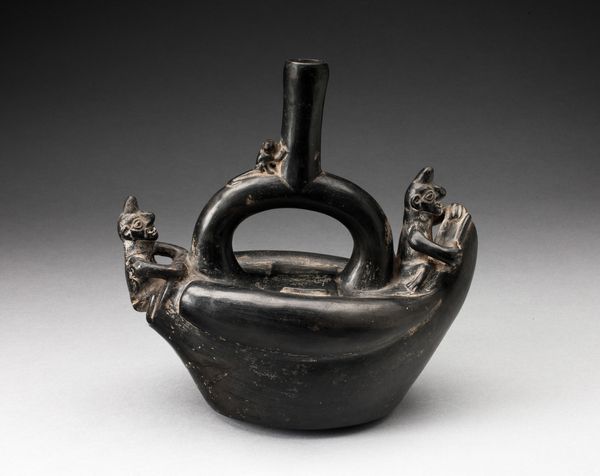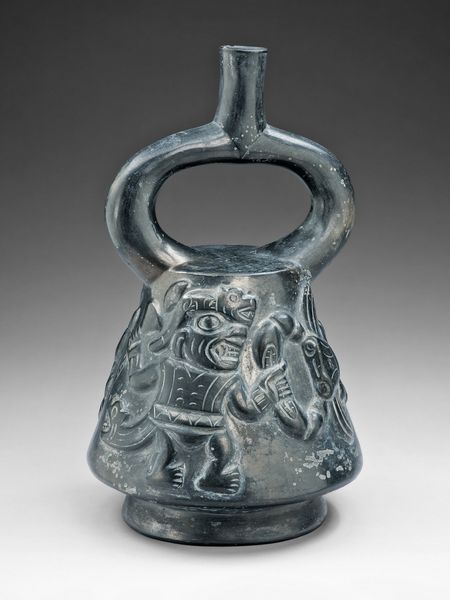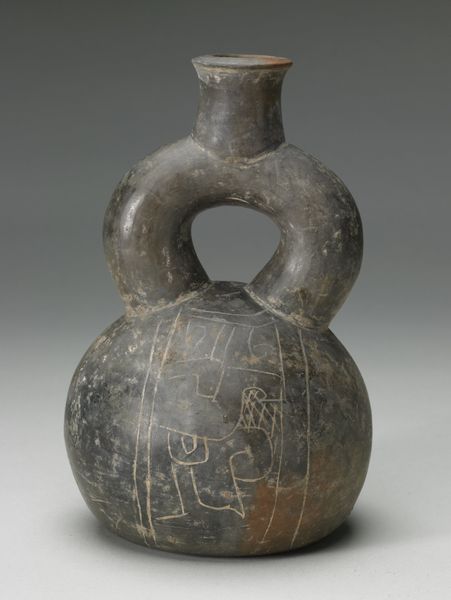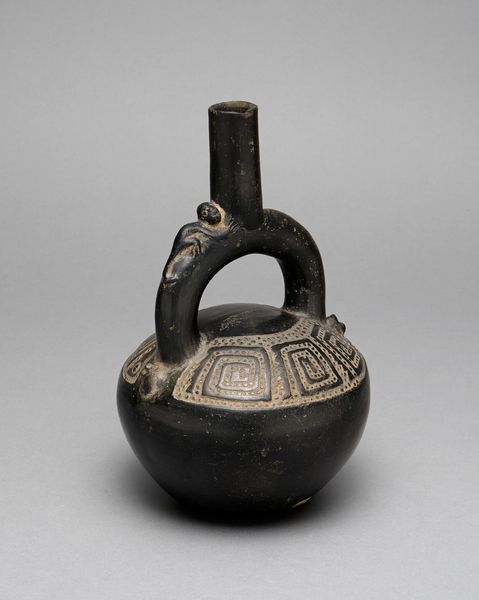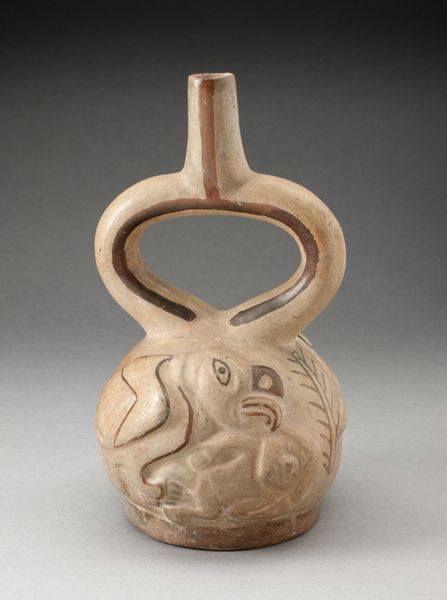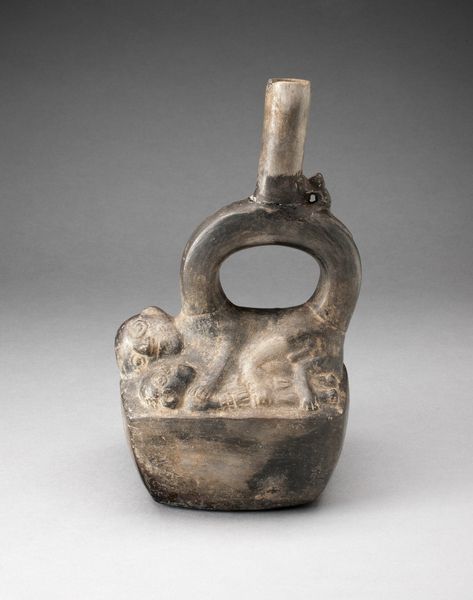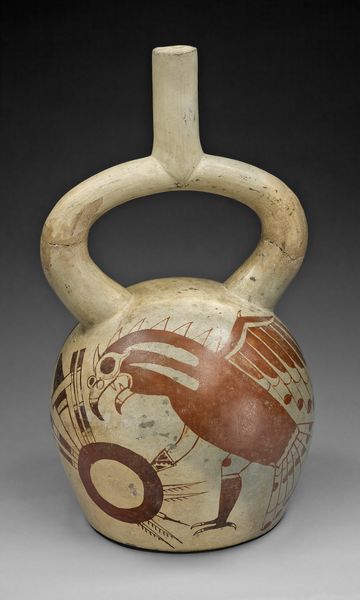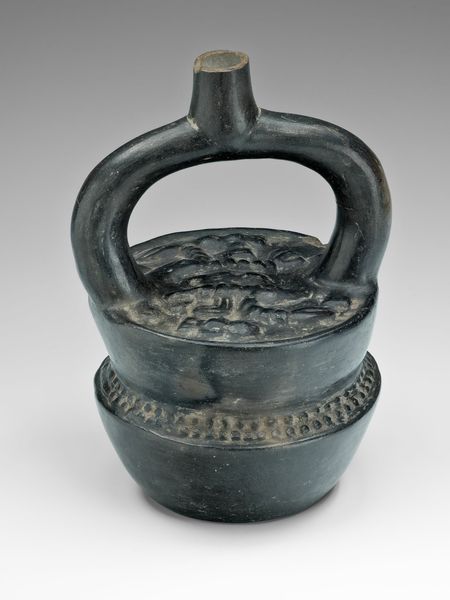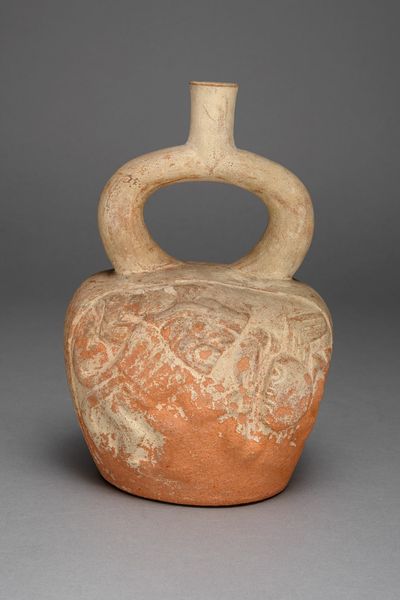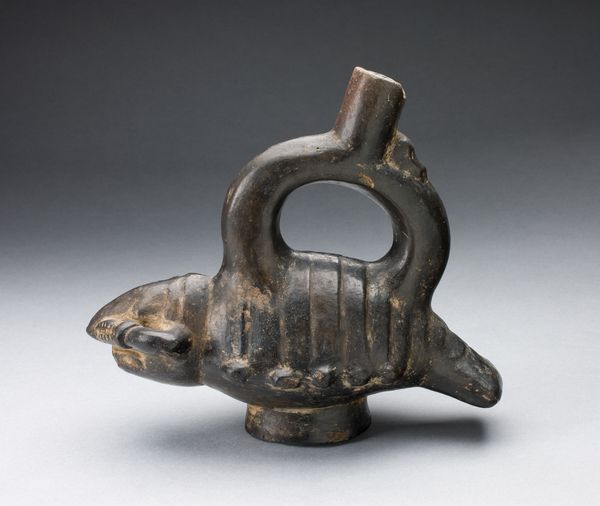
ceramic, terracotta
#
narrative-art
#
ceramic
#
figuration
#
ceramic
#
terracotta
#
indigenous-americas
Dimensions: H. 25.9 cm (10 3/16 in.)
Copyright: Public Domain
Curator: The artwork before us is a ceramic "Stirrup Spout Vessel with Raised Deer Hunt Motifs" dating back to c. 100 - 500, crafted by the Moche culture. It resides here at the Art Institute of Chicago. Editor: It's surprisingly imposing, isn't it? Despite what I imagine to be a relatively small size, the piece seems weighty, both visually and perhaps conceptually. The smooth, almost metallic sheen adds to this gravity. Curator: Yes, the interplay of rounded forms and the smooth surface certainly create a sense of mass, of substantial volume. Consider the unique structure—the arched handle flows seamlessly into the body of the vessel, unifying its various components. Editor: The iconography, of course, is arresting. That narrative scene wrapped around the body—a deer hunt, no less. The deer held symbolic importance—a connection with nature's bounty but also social hierarchies that are depicted. Curator: Precisely. The narrative aspect introduces a dynamic element, a tension disrupting the perfect geometricity of the vessel itself. Note the sharp delineation between figure and ground and the rhythm in its forms. Editor: It speaks to the vital role vessels held beyond mere utility. It evokes themes of sustenance and also reverence—objects imbued with power. What insights did ritual use give? What about the story that they hoped to embody? Curator: Consider how the artist manipulated the clay—shaping it, incising it, achieving such delicate raised reliefs to narrate complex scenes on a rounded plane. The texture against the polished ground produces visual depth. Editor: That textured surface feels significant—maybe to showcase details or possibly offer tactile and emotive possibilities. It's remarkable to think of this vessel in ritualistic contexts. What actions accompanied its creation and use? Curator: I concur. Ultimately, the vessel is a testament to structural balance. And yet, these formal elements only heighten the dramatic visual symbolism inscribed upon its surface. Editor: Indeed. Examining both aspects enhances one's connection to and understanding of these beautiful ceramic vessels and the skilled Indigenous-American communities who gave them meaning.
Comments
No comments
Be the first to comment and join the conversation on the ultimate creative platform.
